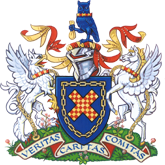Tax and quacks – the medicine stamp duty 1783 – 1941
What is the connection between Beechams Powders, Dr J Collis-Browne’s Mixture, and Daffy’s Elixir (what indeed is Daffy’s Elixir?[1]) and tax.
We were delighted to welcome back Professor Chantal Stebbings (Professor of Law and Legal History at the University of Exeter) to give us the answer in a tax history talk on 22 October.
The connection is that all of the medicines mentioned, and many others, were deemed to be proprietary or “quack” medicines and, from 1783, were subject to medicine stamp duty. Quack medicines were usually the subject of exaggerated claims as to their efficacy, were sold to the gullible and desperate, were rarely effective (and indeed could be harmful), and all had a secret composition, “belonging” to the maker. Furthermore, the maker often had no medical or pharmaceutical knowledge.
In her fascinating talk, Professor Stebbings not only explained the history of quack medicines, but also explained the important role that medicine stamp duty, an almost forgotten tax, played. Not only was it an important revenue raiser, but it was also key in the development of a robust and regulated profession for chemists and druggists. From a tax perspective it was an example of bureaucratic law making, as the statute was almost without definitions and, as a result, the Inland Revenue played an important role in determining some of the key terms. For example, it was the Inland Revenue who decided that baldness and chapped lips were not ailments, whereas insect bites were, and also that, despite claims made for their health giving properties, Ovaltine and Guinness were not medicines, but beverages. These Inland Revenue interpretations were essential to ensure not only compliance with the tax, but also fairness in the imposition of the tax.
The demise of the medicine stamp duty was due, in part, to some of the major producers of proprietary medicines (for example, Beechams) declaring the ingredients on the packaging, so that the products were exempt from the levy, but only if sold by chemists and druggists, and not, for example, by Woolworths. Following consideration of the tax by a select committee it was abolished in 1941.
Professor Stebbings delighted us with her insight into the tax, as well as her knowledge of quack medicines, and provided us with an introduction to a forgotten tax.
Caroline Turnbull-Hall
October 2015
[1] A “universal cure” dating from 1647, to cure (amongst other things) convulsions, consumption, piles, green sickness, king’s evil or any other disorder proceeding from wind, dropsy and scurvy.
